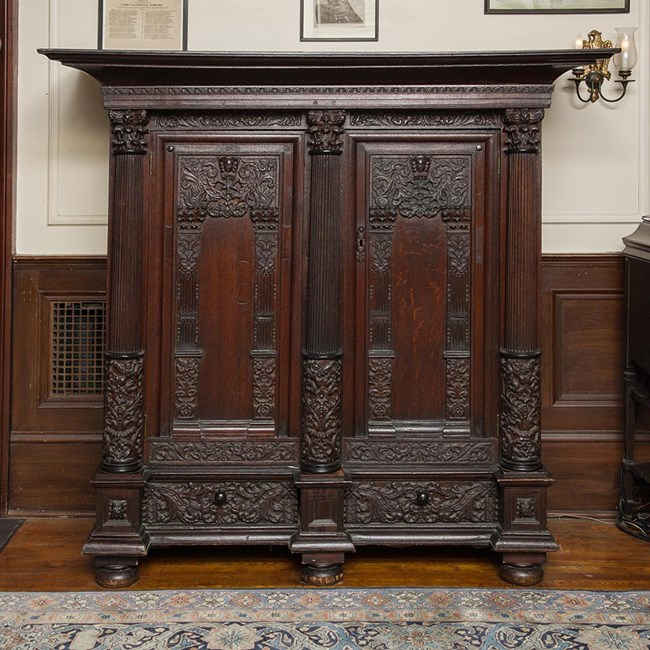Last updated: September 11, 2020
Article
Kast

Large cupboards such as this, known as a kast (or kas), represented an important form of furniture in the Netherlands during the early seventeenth century. Prior to built-in closets or chest of drawers, kasten provided storage for costly textiles and other valuable household goods in homes of the wealthy burgher class. A kast might be bought on the occasion of a wedding and was likely used to store linen and clothing—costly articles that often formed part of a bride’s trousseau.
During the first half of the century they became established as a traditional piece of furniture, and stood in almost every house of moderate status in the Netherlands. To showcase an owner’s prosperity, a kast was prominently positioned in the home—an imposing symbol of wealth and fashion. While functional, they also embodied status, lineage, and national identity—so important that wealthy Dutch families living in the American colonies imported them from the Dutch Republic.
Strong architectural elements are typical features of many Dutch (and American) kasten. Large overhanging cornices, panels, columns, and pilasters, as demonstrated in the Roosevelt kast, are the unmistakable characteristics of this iconic Dutch form. The earliest examples incorporate the dramatic projecting columns and deep relief carving evident in this example. After 1670, decorative treatments transitioned toward more restraint. Kasten made in the American colonies during this later period are almost completely devoid of ornamentation, relying instead on the bold architectonic forms to impress the beholder.
Franklin Roosevelt’s parents, James and Sara, purchased this kast in The Hague in 1881 while touring Europe after their wedding. It arrived just as the United States was beginning a decades-long fascination with all things Dutch. A pervasive Dutch influence on American culture between 1880 and 1920 influenced architecture, antiques collecting, contemporary art, popular entertainment, and advertising. But as descendants of early Dutch colonists in America, this kast might have held deeper meaning for the Roosevelts.
